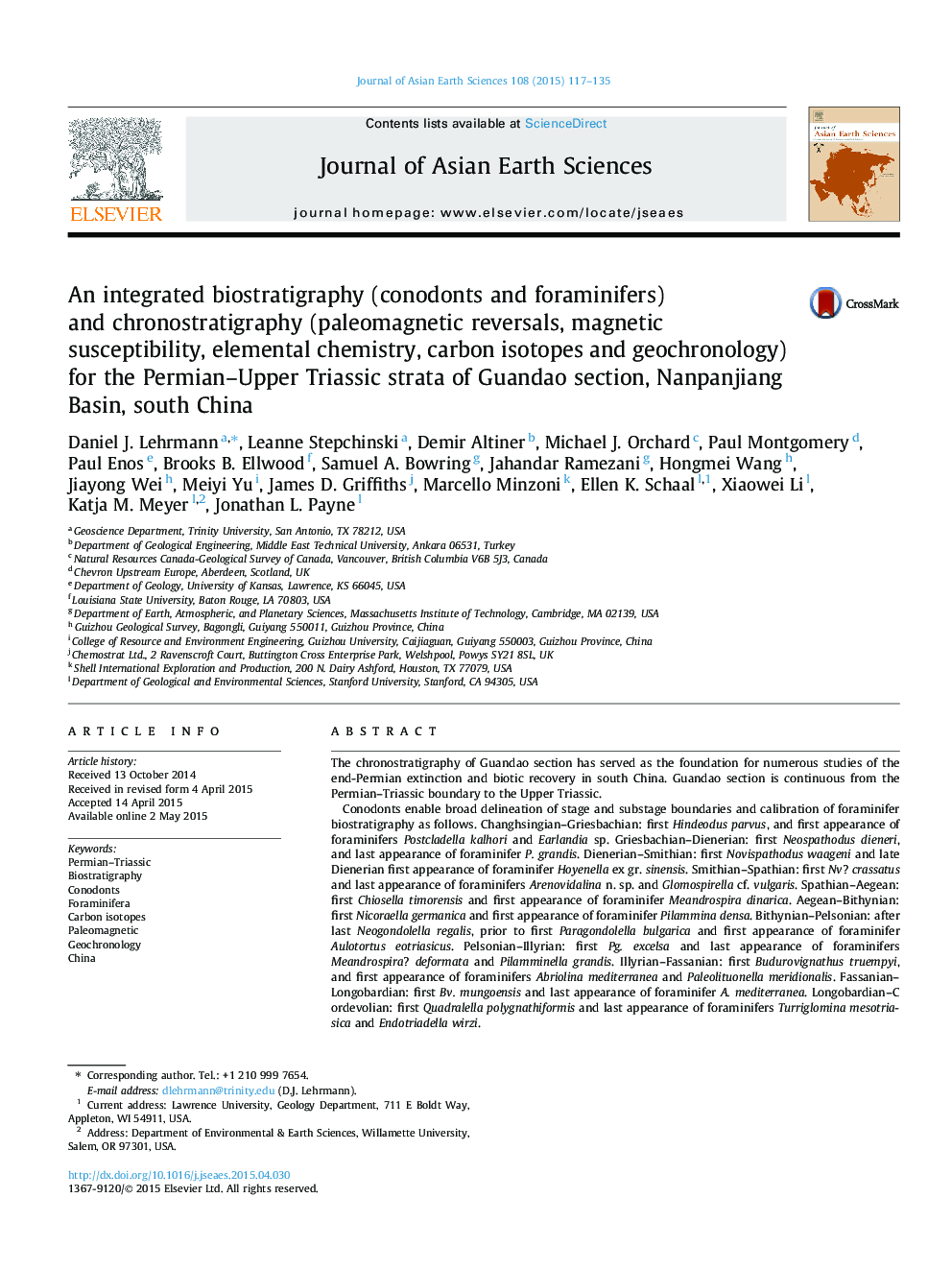| Article ID | Journal | Published Year | Pages | File Type |
|---|---|---|---|---|
| 6444054 | Journal of Asian Earth Sciences | 2015 | 19 Pages |
Abstract
The section contains primary magnetic signature with frequent reversals occurring around the Permian-Triassic, Olenekian-Anisian, and Anisian-Ladinian boundaries. Predominantly normal polarity occurs in the lower Smithian, Bithynian, and Longobardian-Cordevolian. Predominantly reversed polarity occurs in the upper Griesbachian, Induan-Olenekian, Pelsonian and lower Illyrian. Reversals match well with the GPTS. Large amplitude carbon isotope excursions, attaining values as low as â2.9Ⱐδ13C and high as +5.7Ⱐδ13C, characterize the Lower Triassic and basal Anisian. Values stabilize around +2Ⱐδ13C through the Anisian to Carnian. Similar signatures have been reported globally. Magnetic susceptibility and synthetic gamma ray logs show large fluctuations in the Lower Triassic and an overall decline in magnitude of fluctuation through the Middle and Upper Triassic. The largest spikes in magnetic susceptibility and gamma ray, indicating greater terrestrial lithogenic flux, correspond to positive δ13C excursions. High precision U-Pb analysis of zircons from volcanic ash beds provide a robust age of 247.28 ± 0.12 Ma for the Olenekian-Anisian boundary at Guandao and an age of 251.985 ± 0.097 Ma for the Permian-Triassic boundary at Taiping. Together, the new U-Pb geochronology from the Guandao and Taiping sections suggest an estimated duration of 4.71 ± 0.15 Ma for the Early Triassic Epoch.
Keywords
Related Topics
Physical Sciences and Engineering
Earth and Planetary Sciences
Geology
Authors
Daniel J. Lehrmann, Leanne Stepchinski, Demir Altiner, Michael J. Orchard, Paul Montgomery, Paul Enos, Brooks B. Ellwood, Samuel A. Bowring, Jahandar Ramezani, Hongmei Wang, Jiayong Wei, Meiyi Yu, James D. Griffiths, Marcello Minzoni, Ellen K. Schaal,
